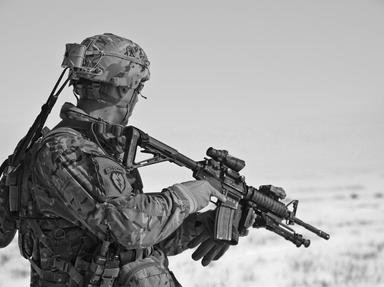Quiz Answer Key and Fun Facts
1. What was the name generally used for this American World War II tank, one of the most produced armored vehicles in the 20th century?
2. Built by the Soviet Union, which series was the most produced tank model during the Cold War (1947-1991)?
3. Which World War II German tank had the most units produced and was the only design in production for the entire war?
4. Which British tank, designed during World War II but produced too late to see service in that conflict, was the main battle tank of the British Army into the 1960s?
5. In what year was the first tank deployed in combat?
6. What was the first tank to have a fully rotating turret?
7. Introduced into service in 1980, what is the name of the main battle tank used by the U.S. Army?
8. Until the 1980s, China built copies of Soviet tanks under license. Which model was the first wholly Chinese designed tank to enter service?
9. Which Soviet tank was the most produced during World War II?
10. What third generation Main Battle Tank replaced the AMX-30 model in the French Army in 1992?
11. What was the name of the World War II German heavy tank that was designated as the Panzer VI?
12. Designed and built by the Swedish Army during the Cold War, what unique feature did the "Stridsvagn 103" model have?
13. India developed and built their own indigenous main battle tank, with production beginning in 2004. What is the vehicle called?
14. Three American post-World War II designs, the M-46, M-47, and M-48, the latter two of which were upgrades to the M-46 design, were named for the same American general. What were these tanks known as?
15. A product of the "land battleship" concept of tank design, which Soviet tank had five turrets?
16. This Israeli designed and built tank, produced in four variants, first entered service in 1979. What is it called?
17. Which World War II encounter was the largest tank battle of the war?
18. Between the First and Second World Wars, Britain and France both developed "Infantry" tanks, slow, heavily armored vehicles meant to support the foot soldiers. Which of these vehicles was a British infantry tank?
19. What is the name of the first German tank design produced after World War II?
20. Which country fielded the most tanks during World War II?
Source: Author
Reamar42
This quiz was reviewed by FunTrivia editor
trident before going online.
Any errors found in FunTrivia content are routinely corrected through our feedback system.
